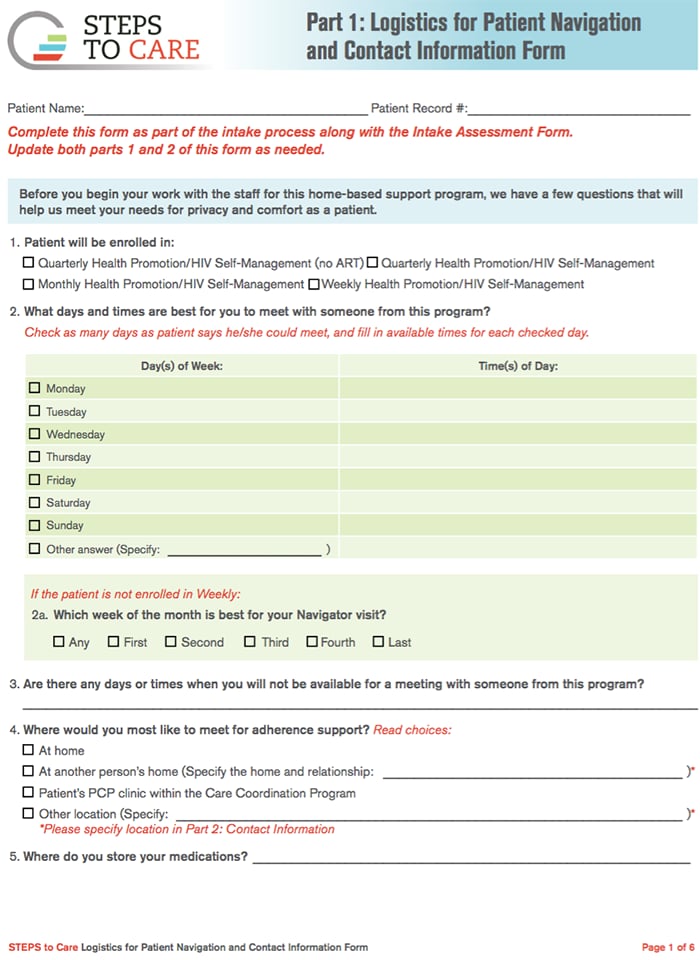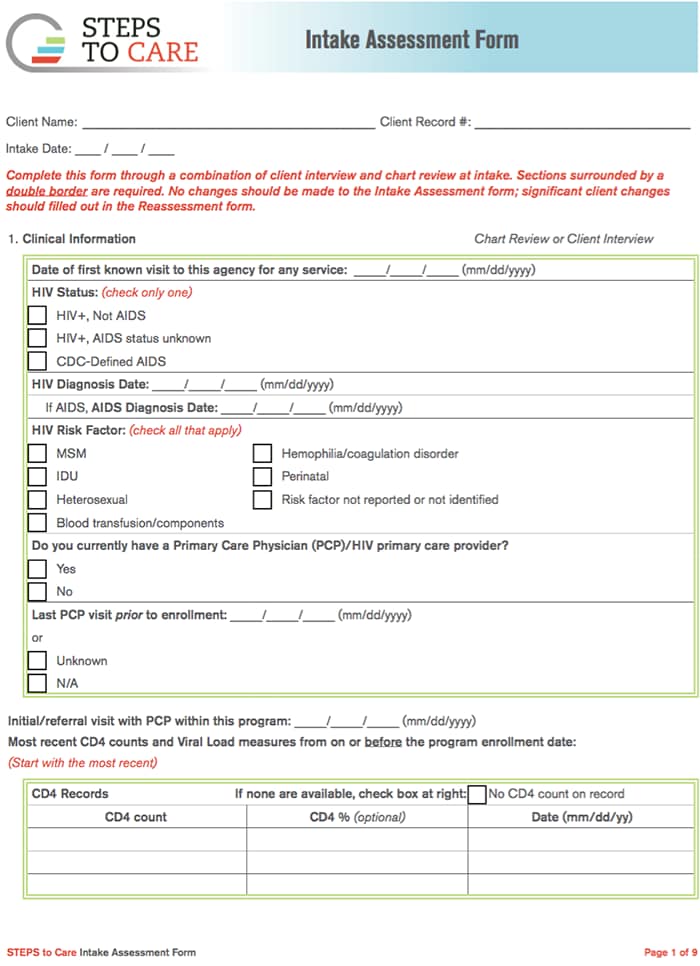STEPS to Care: Client Intake
The intake process is a client’s first contact with STEPS staff. Taking the right approach at intake can set the tone for the entire client experience. On this page, you’ll learn strategies and methods for making the intake process as smooth as possible for clients while ensuring all necessary information is collected.
After reviewing the information below, you will know:
- The purpose of the intake process
- Who should conduct intake
- When it should be done
- Best practices
- How to complete the necessary forms
The Intake Process
Why? The intake process collects a baseline summary of a client’s medical and social needs. This information enables the Care Team and client to determine norms, such as when to contact the client and how the Patient Navigator should identify him or herself when communicating with the client’s friends and family. This is also the time to gather information to determine the client’s personal goals and assess required services.
When? Intake should be completed as soon as the client is identified and oriented to STEPS to Care. It should be completed no more than 14 days after the client is identified.
Who? Usually, intake will be done by a Care Coordinator since the person conducting intake should ideally be the individual responsible for pairing the client with his or her Patient Navigator. This person should be well versed in the policies, mission, and goals of STEPS to Care so that he or she can answer any questions the client has about the program. Additionally, having some clinical knowledge is beneficial when gathering information from chart reviews and conversations with other health care providers.
Intake Process Best Practices
Clients will have many questions about STEPS to Care and may be nervous about the intake process. The most important things for staff to remember during this process are to:
- Maintain a neutral and nonjudgmental demeanor.
- Be prompt. The intake form should be completed within the first 2 weeks of enrollment, if not sooner.
- Observe the client and gauge their comfort level; be flexible to adapt to the client’s needs.
- Take breaks when needed and don’t push too hard to collect information the client may not be ready to give.
- If client seems uncomfortable, you can skip a question, and come back to it after you have developed more of a rapport with the client.
- Don’t be afraid to admit when you don’t know something.
The Intake Forms
Intake is conducted by completing the two forms below.





